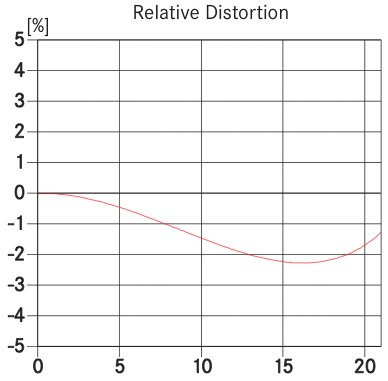
$220 SAVE $130 = 37.0% Western Digital 16.0TB Western Digital Ultrastar DC HC550 3.5-in… in Storage: Hard Drives
|

|

|

|

|

|
Leica 21mm f/1.4 Summilux-M ASPH
Related: distortion, Leica, Leica 21mm f/1.4 Summilux-M ASPH, Leica Lenses, Leica M, Leica M lenses, Leica Summilux, Leica Summilux-M, optics, vignetting, Zeiss ZM
The Leica 21mm f/1.4 Summilux-M ASPH (about $6495) is a fast and ultra high performance 21mm lens with an aspheric design and special glass types.
Introduced at the same time as the Leica 24mm f/1.4 Summilux-M ASPH, the two represent the state of the art in lens design at Leica.
The 21/1.4 Summilux is described as this way: “ A total of ten lens elements are used to achieve this exceptional performance. To correct color aberrations, five of these are made of glass types with anomalous color dispersion (partial dispersion), while a further two have aspherical surfaces. To maintain performance in the close-up range, one group towards the rear of the optical system is a "floating element" that moves independently of the rest of the mechanism”.
The price reflects the exotic nature of this flagship wide angle lens. Only the Noctilux and the 24mm f/1.4 Summilux-M ASPH entail the same exotic construction. The raw unshaped glass alone for this lens likely costs upwards of $500 or so, as well as requiring special handling and coating.
With a modern (2009) design, the lens performs admirably on the Leica M9, presumably in part because of a more telecentric design, which causes the light rays impact the digital sensor more directly, a Very Good Thing, since it reduces vignetting and color shift, a serious problem with (for example), the Zeiss ZM 21mm f/4.5.
Not only is the modern design of the 21/1.4 “friendlier” to the digital sensor of the Leica M8/M9, the built-in lens correction feature of the M9/M8 “knows” that it’s the 21mm, and corrects any residual color shading and optical vignetting out to the corners, resulting in images that are remarkably free of off-center variation (not all vignetting is corrected, a very good thing).
View near real-time pricing and availability for Zeiss ZM an Leica M lenses on the Leica M gear page.
| Focal length: | 21.6mm |
| Aperture scale: | f/1.4 - f/16 |
| Angular field, diag./horiz./vert°: | 92° / 81° / 59° |
| Focusing range: | 0.7m - infinity |
| Coverage at close range: | 685 x 1027 mm = 1:27 (no good for close-ups) |
| Number of elements/groups: | 10 elements in 8 groups |
| Filter thread: | NONE, Series filter VIII in lens hood |
| Weight (as actually weighed): | 492g with mandatory hood 554 with hood, caps and M-21 viewfinder |
| Dimensions (with caps): | Length: 66 / 77 mm (without / with lens hood) Largest diamater: approx. 69.5 mm |
Examples
Many more, and higher resolution examples, along with working notes, etc can be found in my Guide to Leica.



Distortion
Distortion is of the wave type, generally unavoidable at this focal length (but see the Zeiss ZM 21/4.5 Biogon): there exists barrel distortion over the central 2/3 of the frame, reversing to accelerating pincushion distortion beyond that. This level of distortion is very noticeable on buildings and horizons, in spite of Leica’s assertions about it being “negligible”.

MTF (contrast and sharpness)
Performance is very high for a 21mm lens.
The MTF suggests a wave-type field curvature , confirmed with field shooting.
Very strong astigmatism is present even at f/5.6, which suggests some focus shift of a sort, a finding confirmed with field shots in my review in Guide to Leica.
Mouse over the apertures below to compare.

Aperture
Half-stop click-stops are marked in full stops. The very generous spacing and easy finger access is a notable improvement over some very compact Leica M lenses.
Composing
The 21mm focal length absolutely demands the use of the “optional” M-21 viewfinder, a strange way of selling a lens that cannot really be used without the viewfinder.
Ergonomics
The 21/1.4 is fairly large and heavy as Leica M lenses go. But I enjoyed its size; it worked well in my largish hands, better than some smaller (too small) M lenses .
Focusing
My M9 was back-focusing and had to be sent in for adjustment, so the jury is out on focusing.
Conclusions
The high image quality along with an f/1.4 versatility make it very desirable for making images few other lenses can. In fact, it’s the fastest ultra wide angle lens available today (though Canon and Nikon both have 24mm f/1.4 offerings).
My personal take after shooting the Leica 24mm lenses and the Leica 21mm is that I would prefer the 21mm, since 24mm is rather close to 28mm, and 28mm can be shot using the built-in frame lines of the M9.
Seagate 22TB IronWolf Pro 7200 rpm SATA III 3.5" Internal NAS HDD (CMR)
SAVE $100


















